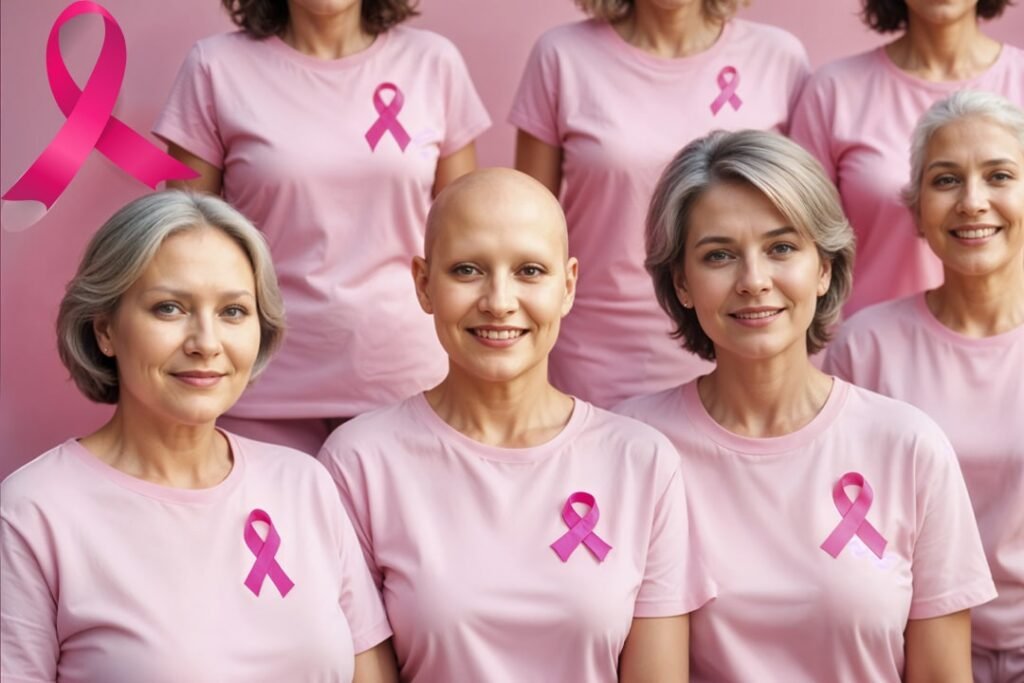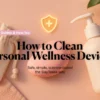
Understanding risk isn’t about blame—it’s about clarity. Some breast cancer risk factors are non-modifiable (like age, family history, and prior chest radiation). Others are modifiable or partly modifiable (like alcohol use, movement and weight, smoking, or menopausal hormone therapy choices). Most people have a mix of both, and many people with risk factors never develop cancer. Likewise, about half of cases occur in people with no identifiable risk factor beyond sex and age, which is why following your region’s screening guidance matters. (World Health Organization)
Read next: Pink October Hub
What “risk” actually means
Risk factors raise probability—they don’t guarantee outcomes. Your personal risk is a combination of fixed traits and changeable habits; even small changes (like reducing alcohol and not smoking) can help shift risk in a favorable direction over time. (Cancer.org)
Non-modifiable risk factors (you can’t change these)
- Female sex and increasing age. Most cases are found in people aged 50+. (CDC)
- Family history & inherited variants (e.g., BRCA1/2; others exist). Consider genetic counseling if family patterns suggest it. (Cancer.org)
- Personal history of breast/ovarian cancer or certain benign breast diseases (DCIS/LCIS, atypical hyperplasia). (Cancer.org)
- Dense breast tissue. Higher density is associated with higher risk. (Cancer.org)
- Prior radiation to the chest (especially at a young age). (Cancer.org)
- Hormonal milestones. Earlier first period, later menopause, and some reproductive patterns increase lifetime estrogen exposure. (Cancer.org)
- Diethylstilbestrol (DES) exposure (in utero or taken by the mother). (Cancer.org)
Key context: Roughly half of breast cancer cases have no identifiable risk factor besides sex and age, so screening guidance still matters even if you don’t see yourself in the lists. (World Health Organization)
Modifiable and partly modifiable risk factors
- Alcohol use. Risk increases with amount consumed; cutting back lowers risk. (Cancer.org)
- Movement, weight, and sedentary time. Being physically active and maintaining a healthy weight after menopause are protective patterns. (CDC)
- Tobacco (smoking). Smoking is a cancer risk; avoiding it benefits overall cancer risk profile. (World Health Organization)
- Menopausal hormone therapy (MHT/HRT). Especially combined estrogen-progestin increases risk while in use; discuss alternatives and duration with your clinician. (Cancer Research UK)
- Hormonal contraception. Some methods show a small increased risk while using; the risk diminishes after stopping—discuss your options. (Cancer Research UK)
- Reproductive factors with protective effects. Breastfeeding and earlier first full-term pregnancy are associated with lower risk on a population level. (Cancer.org)
Quick comparison table
| Non-modifiable | Notes | Modifiable / Partly | Helpful actions |
|---|---|---|---|
| Age & sex at birth | Risk rises with age; most cases occur 50+. | Alcohol | Cut back; alcohol is dose-responsive. |
| Family history / BRCA1/2 & others | Consider genetic counseling/testing. | Activity & weight | Move most days; aim for balanced weight. |
| Dense breast tissue | Higher density raises risk. | Smoking | Avoid/quit; seek cessation support. |
| Prior chest radiation | Especially if at a young age. | MHT/HRT | Discuss risks, duration, alternatives. |
| Hormonal milestones | Earlier periods / later menopause ↑ exposure. | Breastfeeding/pregnancy | Protective patterns on a population level. |
Men can get breast cancer, too (rare but real)
Risk factors in men include age, family history, BRCA2 variants (lifetime risk ~6%), Klinefelter syndrome, liver disease, prior chest radiation, excess body weight, heavy alcohol use, and estrogen treatment. Talk with a clinician if symptoms appear (lump, nipple changes, discharge). (Cancer.org)
What to do with this information (practical next steps)
- Talk to a clinician about your personal risk and screening schedule for your country/region. (Screening ages/intervals vary.) (CDC)
- Consider genetic counseling if you have a strong family history or relatives diagnosed young. (Cancer.org)
- Adopt supportive habits: reduce alcohol, don’t smoke, move daily, break up long sitting time, and prioritize sleep/stress care. (Cancer.org)
- Be body-aware, not fearful: self-checks help you notice changes, but they do not replace recommended screening. (CDC)
Common myths (quick debunks)
- “Only lumps matter.” Some cancers don’t present as a lump; watch for skin/nipple changes and talk to a clinician about new symptoms. (The Times of India)
- “Bras/deodorants/phones cause breast cancer.” There’s no good evidence for these claims; focus on proven risks and screening. (Cancer.org)
FAQs
No. Most cases are not caused by a single inherited variant, though family history can raise risk—screening still matters. (Cancer.org)
They help shift population-level risk, particularly alcohol reduction, physical activity, and not smoking. (Cancer.org)
Only some people do. Your clinician or a genetic counselor can review family patterns and decide. (Cancer.org)
It varies by country and personal risk. Follow your region’s guidance with your clinician. (CDC)
Not necessarily. About half of cases have no identifiable risk beyond sex and age—another reason to follow screening advice. (World Health Organization)







